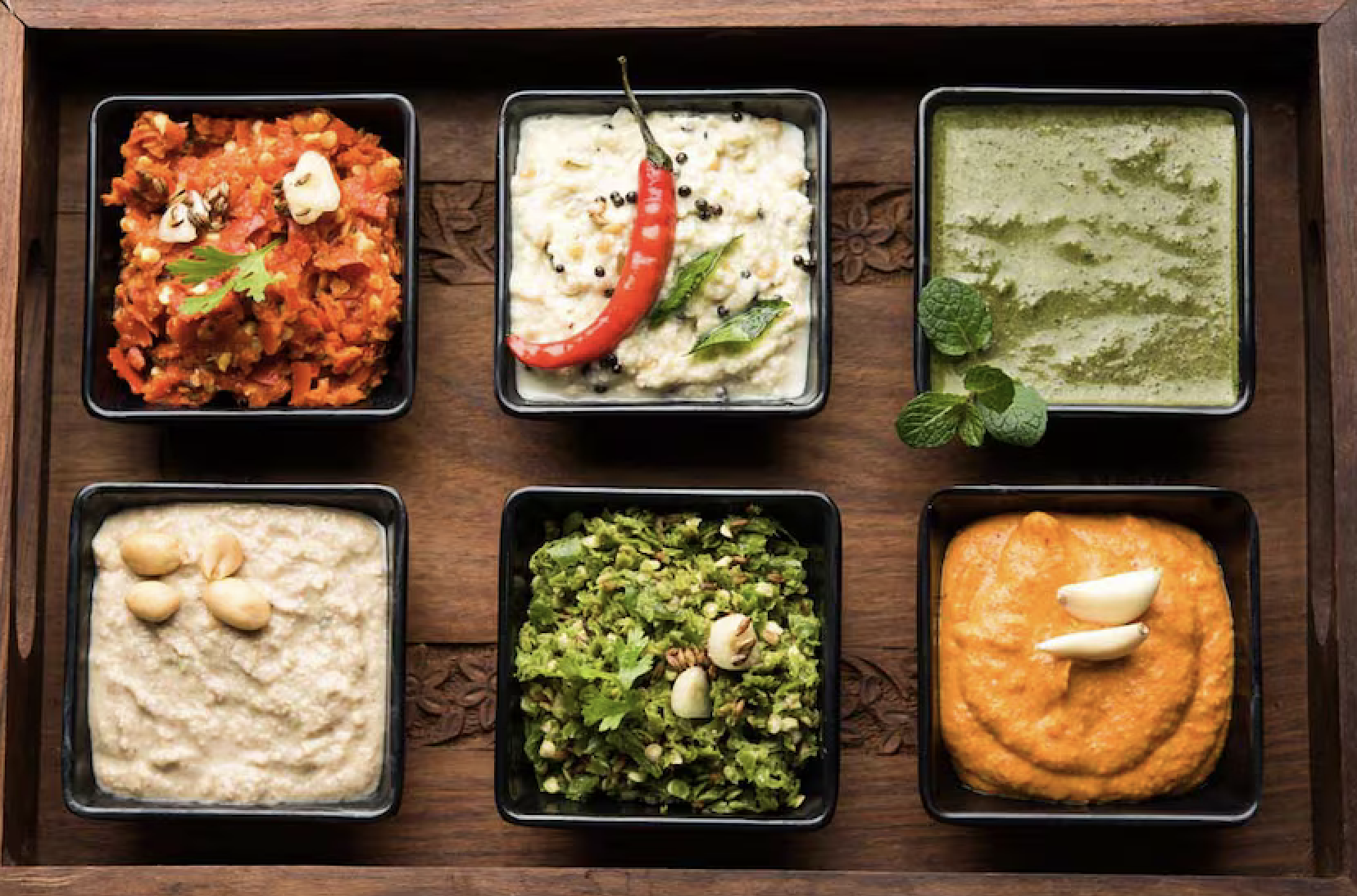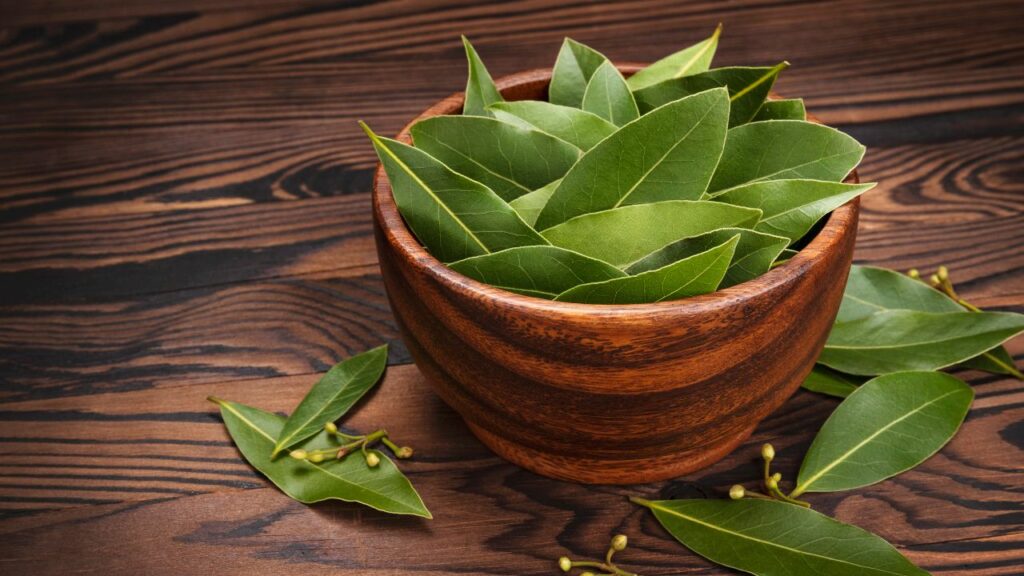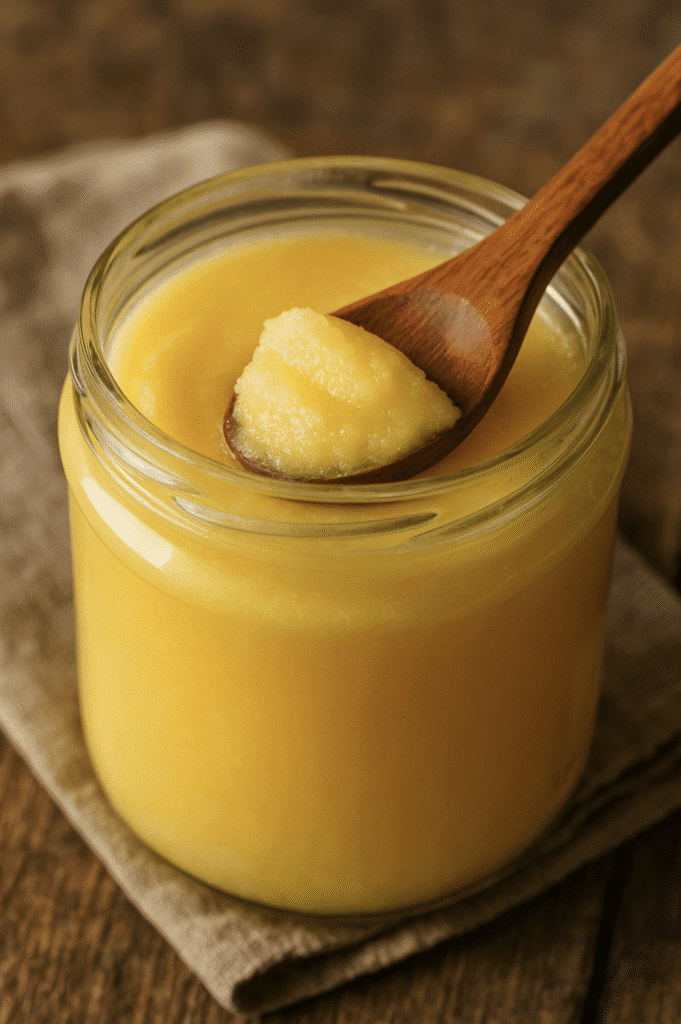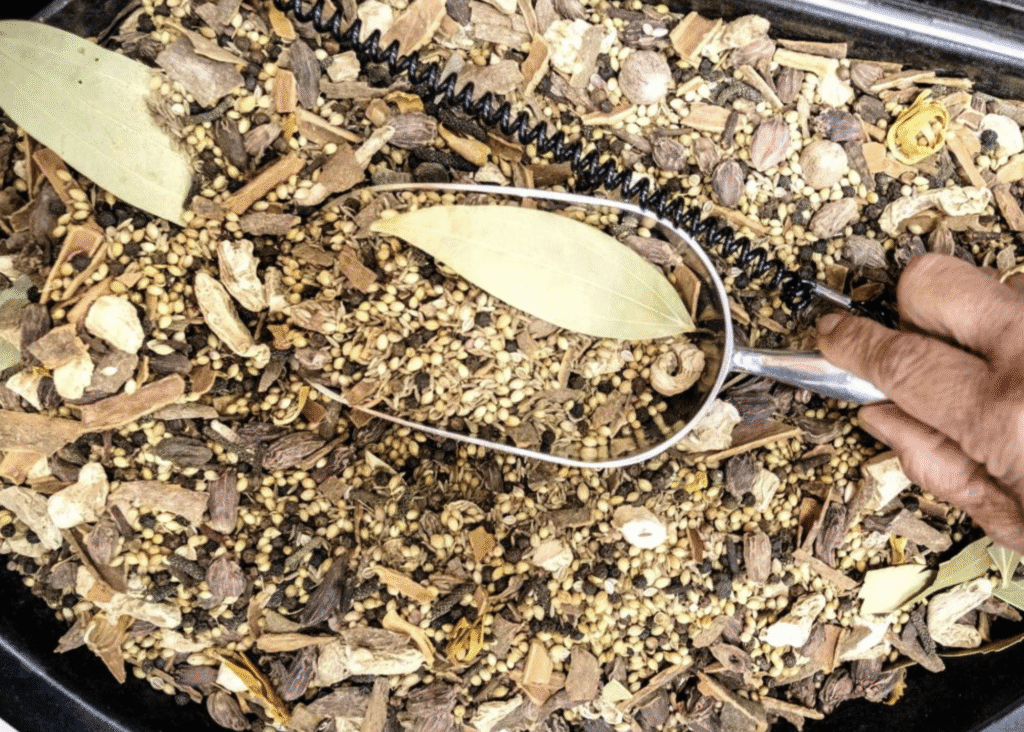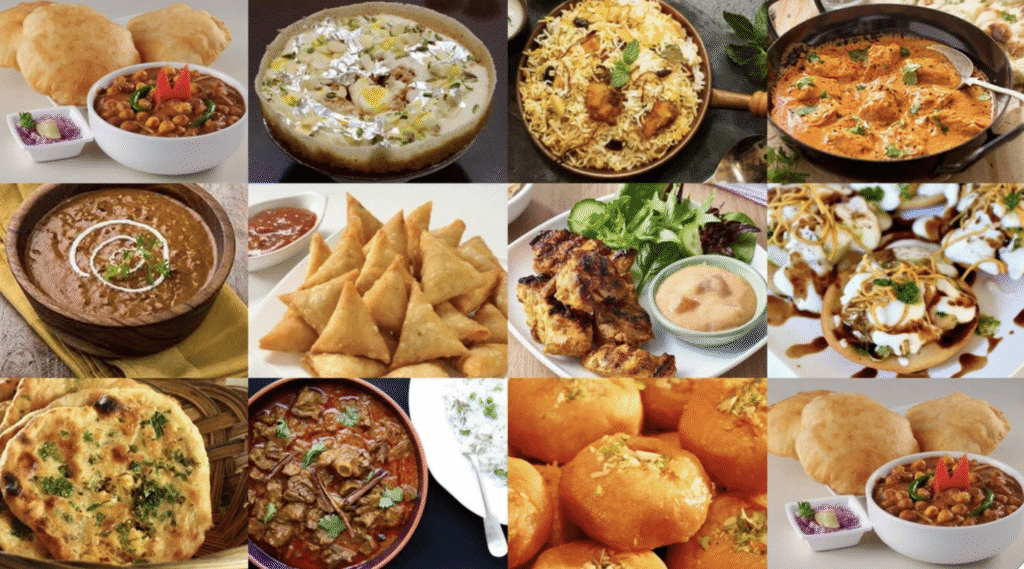Understanding Indian Chutneys: Types, Ingredients and Pairings
Chutney isn’t a side dish. It’s a sharpener, a cooler, a contrast. Sometimes it’s there to soothe heat, sometimes to add it. In Indian cooking, chutney plays the role of both background and punctuation — never center stage, but the thing that makes the rest sing.
There’s no one version of chutney. No universal color, texture, or rule. You’ll find fresh ones, cooked ones, sweet, fiery, tangy, creamy, fermented — often all in the same region. And while Western versions sometimes label “chutney” as a thick, jammy preserve, Indian chutneys are usually lighter, fresher, and meant to be eaten right away.
For me, chutneys were one of those things I didn’t really get until I started cooking Indian food regularly. I’d always thought of them as little extras — maybe nice to have, but not really essential. That changed quickly.
The more I made them, the more I noticed how much they do. A fiery curry felt calmer with a spoon of coconut chutney on the side. A plain dosa suddenly felt like a full meal with something tangy and green next to it. Even a pile of leftover rice got interesting when I added a sharp onion chutney.
They’re not complicated. Most come together fast. And once you have a feel for them, you’ll want one on the table all the time — even if it’s just a spoonful.
Let’s break it down a bit. What actually makes a chutney, which ingredients show up the most, and how you can pair them without overthinking it.
Table of Contents
The Two Main Types: Fresh and Cooked
1. Fresh Chutneys
These are fast, raw, and meant to be eaten within a day or two. Think of them more like pestos or dips — bright, punchy, and full of moisture.
Common base ingredients:
-
Fresh herbs (like coriander or mint)
-
Coconut
-
Roasted peanuts
-
Raw mango
-
Green chili
-
Garlic or ginger
-
Yogurt (for creamier versions)
Tempering optional: In South Indian chutneys, it’s common to pour hot oil with mustard seeds, curry leaves, and urad dal over the chutney just before serving.
Pair with:
Dosas, idlis, pakoras, samosas, rice dishes, or as a spread on wraps.
2. Cooked Chutneys
These are simmered to deepen flavor and prolong shelf life. Some are even preserved for weeks. They can be sweet, tangy, spicy, or all three at once.
Common base ingredients:
-
Tamarind
-
Jaggery or sugar
-
Tomato
-
Onion
-
Dried red chilies
-
Spices like cumin, fenugreek, or fennel
Texture: Can be smooth or chunky, depending on the dish and region.
Pair with:
Curries, biryani, flatbreads, or anything rich that needs a sharp contrast.
Some chutneys have become regulars in my kitchen. A classic green chutney made with coriander, mint, and a squeeze of lime — bright and sharp — is one I reach for constantly, whether it’s with samosas or just spread on toast. Coconut Mint Chutney with Roasted Mustard Seeds & Curry Leaves, is a must with dosa days. And then there’s tamarind chutney — sticky, sweet-sour, spiced with cumin — that somehow works with everything from fried snacks to rice bowls. They’re all simple, but they each bring something different to the plate.
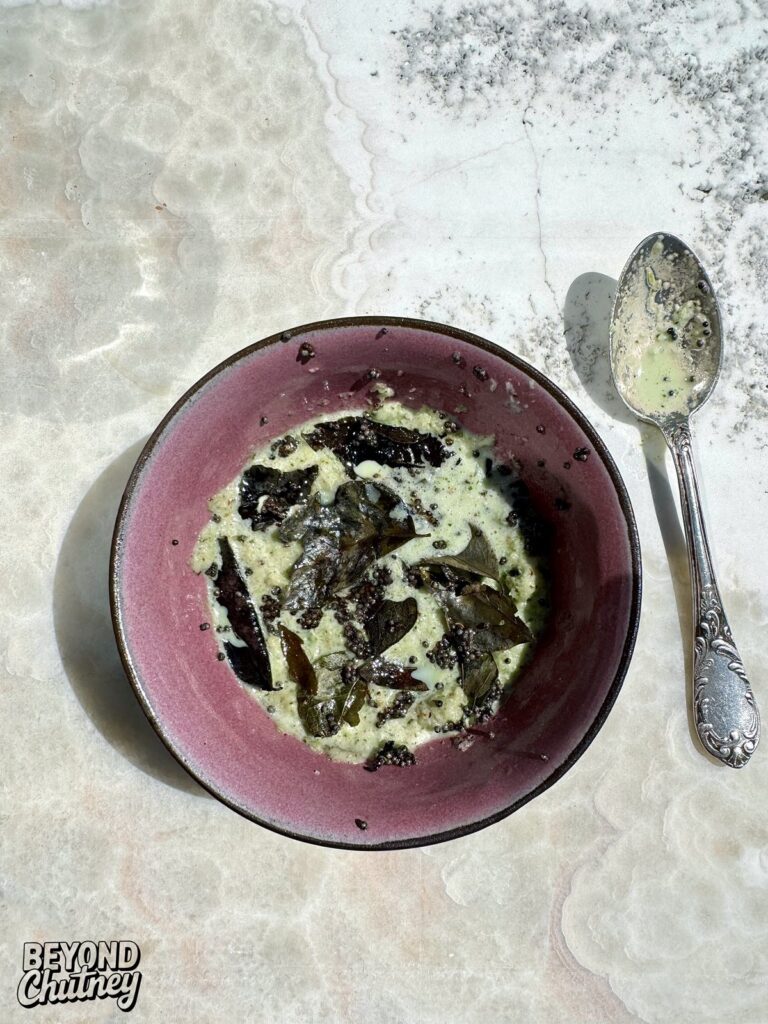
Core Ingredients to Know
While chutneys vary wildly by region, here are a few ingredients that appear again and again:
-
Coriander (Cilantro): Often the backbone of green chutneys. Adds brightness and aroma.
-
Mint: Cooling and fresh, usually paired with coriander or yogurt.
-
Coconut: Used in South Indian chutneys — sweet, soft, and soothing.
-
Tamarind: Sour, complex, and essential in many cooked versions.
-
Jaggery: Unrefined sugar used to balance sour or spicy chutneys.
-
Chili: Both green (sharp heat) and dried red (deep, smoky heat).
-
Roasted lentils or peanuts: Add body and richness.
-
Yogurt: For creamy chutneys with a cooling effect.
Also — don’t underestimate what a tiny spoon of hot oil or ghee poured over a chutney can do. That quick sizzle with mustard seeds, curry leaves, maybe a few lentils? It wakes everything up. Especially with coconut or tomato-based chutneys, that final tadka makes a huge difference in both flavor and aroma.
Regional Differences
-
North India: Green chutneys with mint and coriander are everywhere, often paired with snacks like samosas or pakoras. Sweet tamarind chutneys are also popular, especially in street food.
-
South India: Coconut chutney is a staple — often paired with dosa and idli — and is usually tempered with mustard seeds and curry leaves. Tomato and onion chutneys are also common.
-
West India (e.g. Maharashtra, Gujarat): Dry garlic chutney, peanut chutney, and raw mango chutneys are often paired with vada pav or theplas.
-
East India: Mustard seeds and pungent flavors show up more here. Chutneys may include fermented or slightly pickled ingredients.
How to Pair Chutneys
There’s no rule, but here’s a general guide:
| Dish Type | Chutney Type |
|---|---|
| Fried snacks | Green chutney, tamarind chutney |
| Dosa/Idli | Coconut chutney, tomato chutney |
| Parathas | Garlic chutney, yogurt-based chutney |
| Rich curries | Mint chutney, onion chutney |
| Grilled meats/tofu | Spicy coriander chutney |
| Biryani | Sweet onion chutney, mint chutney |
A Word on Storage
Fresh chutneys don’t keep long. If you’re using herbs, coconut, or yogurt, aim to eat them within 1–2 days. Cooked chutneys, especially those with tamarind and sugar, can last in the fridge for a week or two.
Always use a clean spoon, and store in an airtight container to avoid cross-flavoring or spoilage.
Final Thought
Chutney isn’t just “extra.” In Indian cooking, it’s how contrast is created. A sharp green chutney can brighten a fried snack. A mellow coconut chutney can cool a fiery curry. It’s balance in a spoonful.
You don’t need ten kinds. Even one good chutney in your fridge can make an ordinary meal feel complete.

